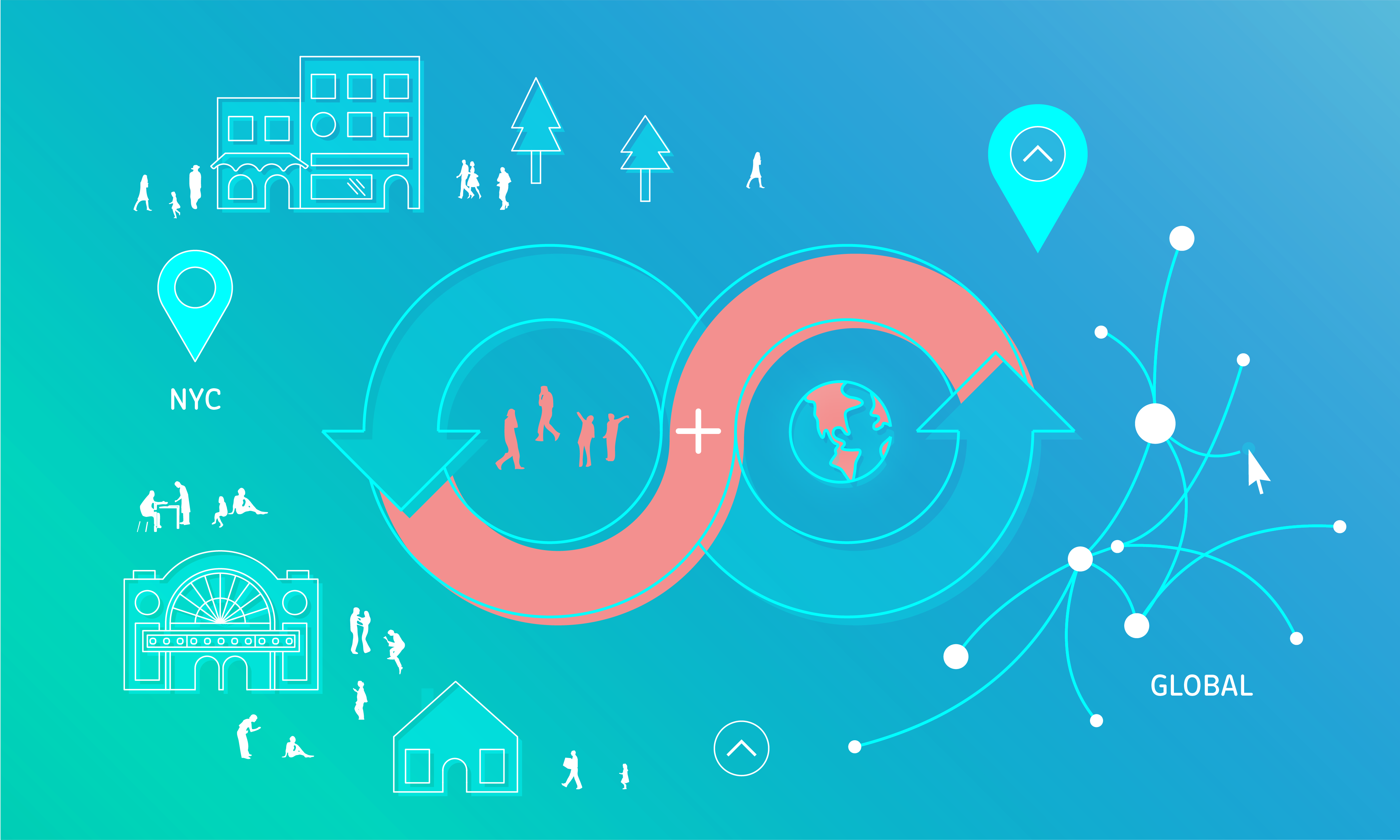
Creative Seeking Empowerment…
For years, I have been looking for an innovative, open and collaborative community. Last summer, I stumbled into Steemit. I never imagined that exactly 12 months later I would be making an incredibly challenging decision to pivot away from a promising career as an architect in order to embrace a new technological frontier.
I believe that the momentum of decentralized platforms like Steemit will kickstart a new and open-sourced age of making, sharing and building. This post details a bit of my own personal quest and hope for the blockchain ecosystem to become a powerful resource for creatives and communities all over the globe.
Beginnings as an Artist in Berlin
For me, the quest for a collaborative commons began in Berlin, Germany.
In 2011, I graduated from architecture school and immediately moved to Berlin alongside three other designers. The four of us bought one-way tickets. We packed pens, pencils, paper and sketch books. We rented a tiny studio space out of a reclaimed East German prison complex (hey, it was cheap!) and immediately got to work. We sought to make and imagine architecture through art.
Our collective work was never just about the final - framed - product. We pushed ourselves to communicate with one another through pen and paper, using our individual styles as a way of group problem solving. This design-method expanded. We frequently collaborated with a community of Berlin creatives as we realized the potential to make work on paper, on the wall, sculpture and into architecture.
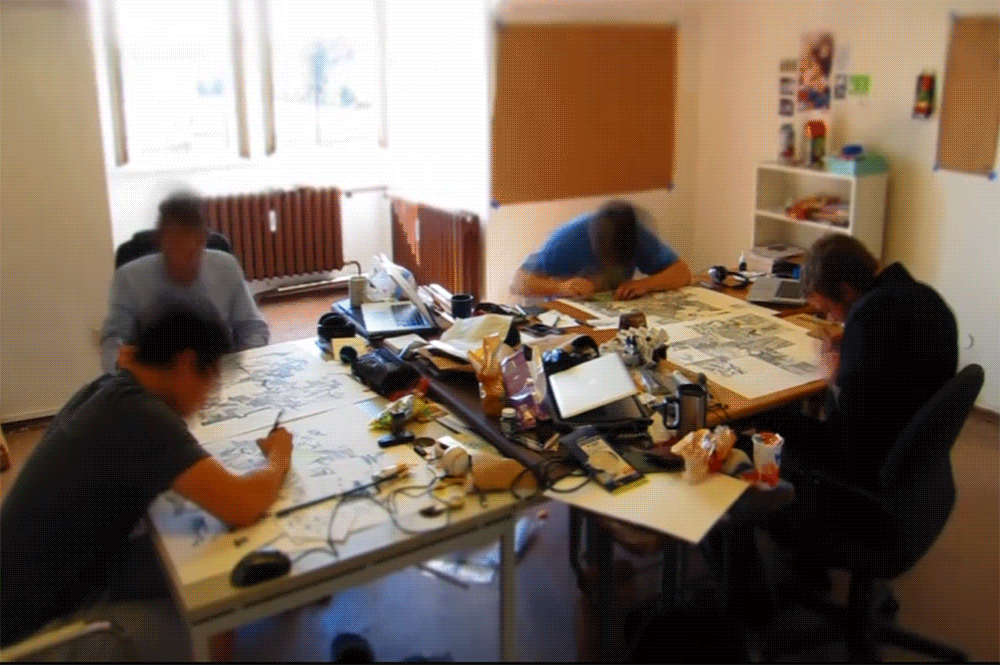

- We challenged one another with pen and paper, alternating turns. Drawings were passed around in loops and slowly, a composition developed. Each of us built off of one another’s textures and geometries as ideas took shape.
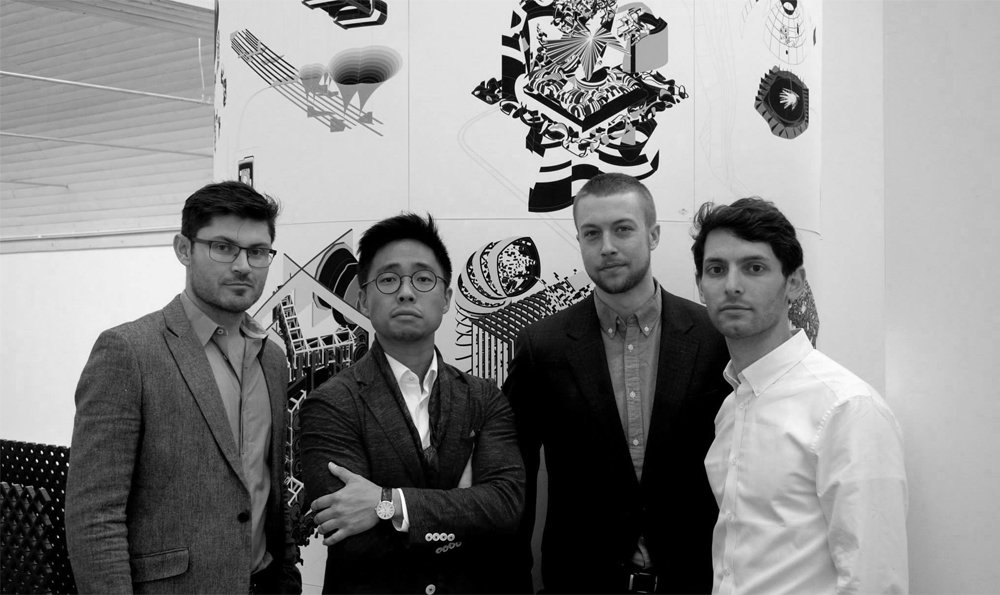
- @hitheryon is design collective made up of @arete, @hansikhouse, @voronoi and @erb.
We were successful at exhibitions. @hitheryon had dozens of them over the course of three years. People loved seeing and learning about the process of our bauhaus-ian craft. We had our first solo show in December of 2011. Later in 2012 we were featured in a segment on Arte TV. In the Summer of 2014 we were part of an incredible group exhibition at Den Frie Museum of Contemporary Art in Copenhagen. But, for all the good attention we received, we did poorly when it came to selling our work. We sold a number of our drawings, but it was never enough to support the four of us. People were always more enthralled by the process of our work than they were willing to purchase the final product. For a typical gallery, the product was always the ultimate point. There was so much pressure on that final piece to sell. This “all or nothing” approach deeply hurt our practice.
The four of us craved a venue that could attribute value to our process (as well as our final product) but never found it. Our experiment suffered and eventually, we left Berlin.
A Retreat to the Traditional Workplace
I left Berlin and moved back to the states. Though I worked more traditional "9-5" jobs, I did bring an energy and passion for collaboration back with me. Architecture (especially in New York City) had too much ego and not enough context. I wanted to learn more about the canvas beyond the footprint of a single building. This new scope of pushed me into the world of urban design and city planning. To some, that sounds like even more ego! But to me it felt like a larger scale of our collaborative Hither Yon drawings.
For the last few years I’ve worked in an architecture and urban design firm in New York City. I’ve been incredibly lucky to have worked on projects all over the world and have been even more fortunate to see the fruits of my labor manifest themselves in the shapes of buildings, city-blocks and streetscapes.

- Giralda Avenue Streetscape, Florida. Through this design, pen and paper became stone and mortar. I spent thousands of hours working on this paving pattern and was incredibly lucky to watch it become real. (Still under construction!)
Tools of the “9-5” Trade
Still though, the processes of professional practice were deeply traditional. An architecture firm today isn’t so different from an architecture firm 100 years ago. The tools might look different. But a drafting desk is functionally the same as AutoCAD (a digital drawing software) … all we’ve done is swap a pencil for a cursor. Computer drawing is an imitation game. Software does it’s best to imitate how an architect draws a line from point A to B.
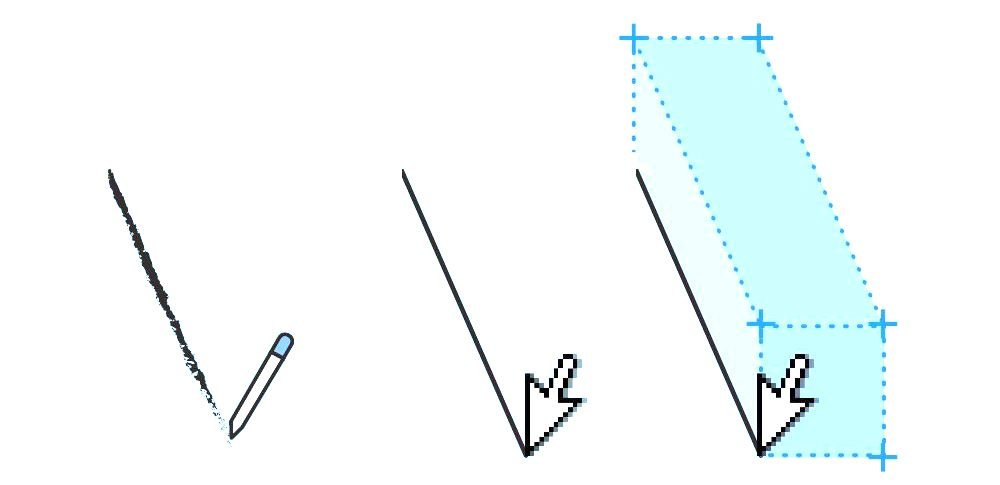
Over the last few years I witnessed firms grow increasingly dependent on employees who were good at software, and not necessarily those who were good at design. I saw several friends and colleagues fired for not keeping pace with the software surrounding them. Today, I know the software very well… but… 10 years from now? Not a chance. The software-centric corporate ladder felt like a race that was impossible to win. After a few years in my office I realized that I was beginning to focus more on learning the tools and less on the quality of design.

Discovering The Melting Pot of Steemit
I was anxious for something different. I started looking for new resources that might empower my practice. I wanted a venue for something visual, communicative and adaptable. I had been through the online mill of social media and had exhausted so many options. It was really like a Goldilocks scenario... nothing fit. Twitter was too fleeting, Tumblr felt invisible, Instagram felt fake, and Facebook became increasing isolating. All of them felt as if I was working the same chaotic ladder-style game.
Last summer, I stumbled into the Steemit ecosystem completely by chance. “The Internet’s Small Town” the landing page beamed. I began to flip through the pages and found a community of artists, designers, engineers, photographers, writers, travelers and entrepreneurs. It felt like a melting pot glowing with genuine conversation and excitement. I was completely hooked. I joined the blockchain under the moniker “lgm-1” (just over 1 year ago now!) Steemit felt empowering. And it jolted something inside me that I hadn’t felt since drawing collaboratively among four friends in a Berlin studio several years earlier.
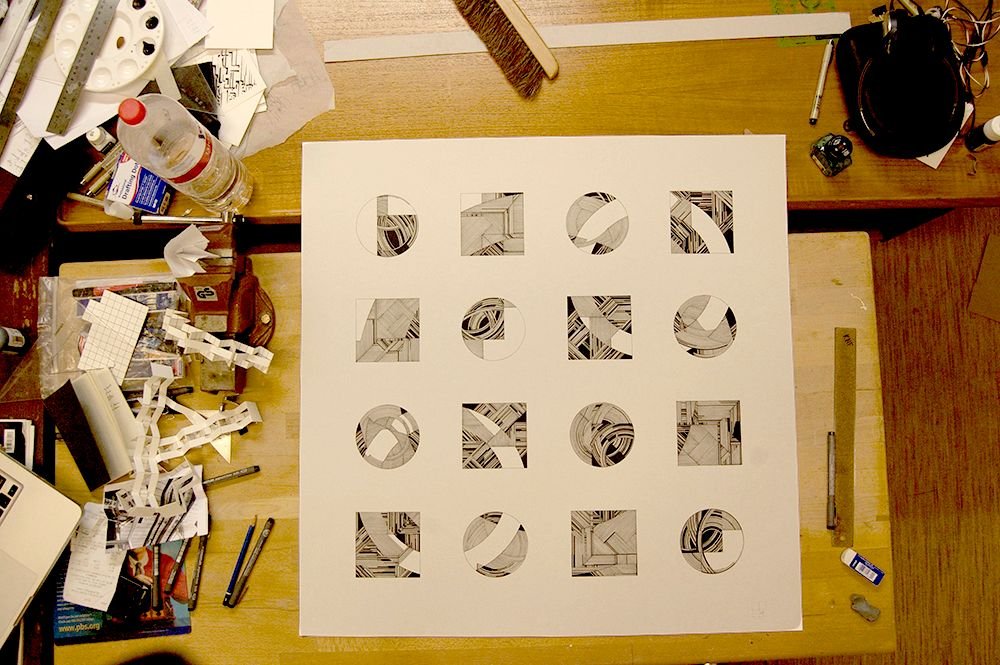
Empowering Creative Process
Finally, a venue to value process! This was the illusive thing I was looking for since the Berlin days. Steemit isn’t a polished art gallery or a quiet museum… it’s more like a communal work desk. It’s a place where you can share raw thinking and receive constructive and honest feedback.
Sketchbooks, bar napkins, eraser residue, smudges, study models, late nights, early mornings, crumpled-up paper and globs of paint... The creative “process” can be where the best stories are hiding. It’s where the artist’s rigor, passion and craftsmanship are brought to a boil. The “final” piece is just a small window into a much bigger landscape. With Steemit, creatives are finding a platform to share the stories beyond the frame.

A Collaborative Commons with @sndbox
Today, it’s time to take a risk. Steemit is an exciting piece of what some call the “collaborative commons”… it’s a disruptive pivot in the great social media experiment. The STEEM ecosystem is cultivating a new environment to explore the impact of a global network on local communities.
I left my job to pursue the collaborative commons through @sndbox. An incubator project built on the STEEM blockchain. I’m excited to push forward in this new endeavor alongside my Berliner brother @hansikhouse. Together, we're going to do many more projects like STEEM Park and empower other community oriented creatives around the globe.
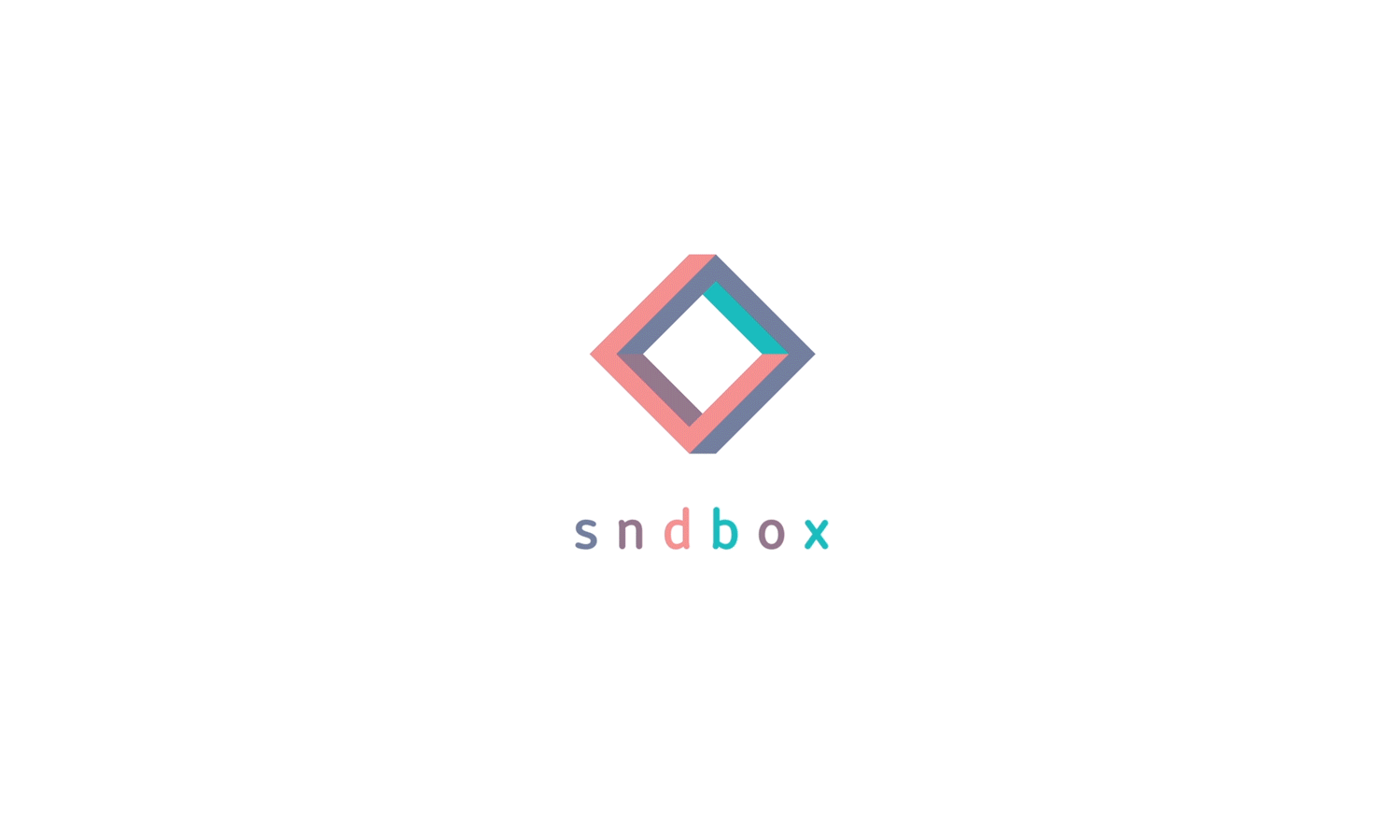
The blockchain ecosystem will kickstart a new and open-sourced age of making, sharing and building. From here on, I'll be working hard to bring this new age just a few steps closer. STEEM on!

